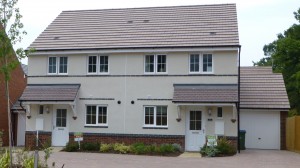Following the Second World War, house building in England increased to reach a peak of around 352,000 in 1968. As the population has grown and households shrinking since the 1970s, Britain has not built enough new homes. It is generally agreed that around 250,000 new homes are required each year. However a little over 100,000 are actually being built. Even with the taxpayer funded Help to Buy subsidy, it is unlikely that the number of extra new homes built in 2013 will be more than 30,000, with a total of just 74,000 new homes bought using the scheme.
 Britain’s private house builders have never built more than 200,000 homes in any one year so are not equipped to build 150,000 more than they currently do to fully meet demand. In the housing boom years in the late 60s, 40% of new homes were built by councils.
Britain’s private house builders have never built more than 200,000 homes in any one year so are not equipped to build 150,000 more than they currently do to fully meet demand. In the housing boom years in the late 60s, 40% of new homes were built by councils.
House builders sitting on 400,000 plots, yet they blame difficulties in gaining planning permission, the green belt and all sorts of other restrictions for the shortage of new homes being built. Even this week, representatives from the larger house builders, Barratt, Taylor Wimpey and Persimmon met with housing minister Mark Prisk to push for even further relaxation of regulations and planning controls in return for increasing their output. This forgets the fact that 83% of major housing applications are approved. This figure would be higher if developers came forward with better schemes that paid more attention to local planning guidance and constraints





